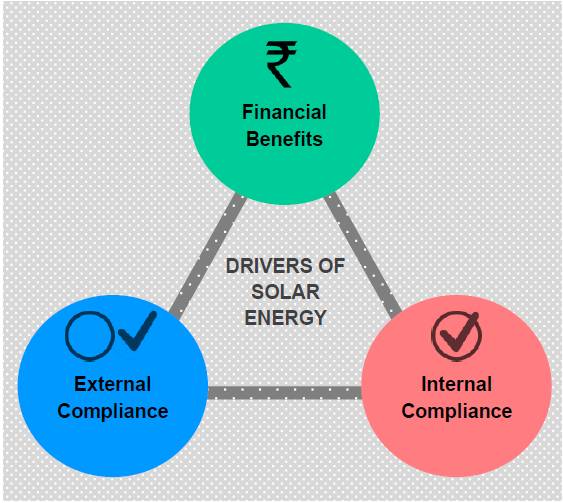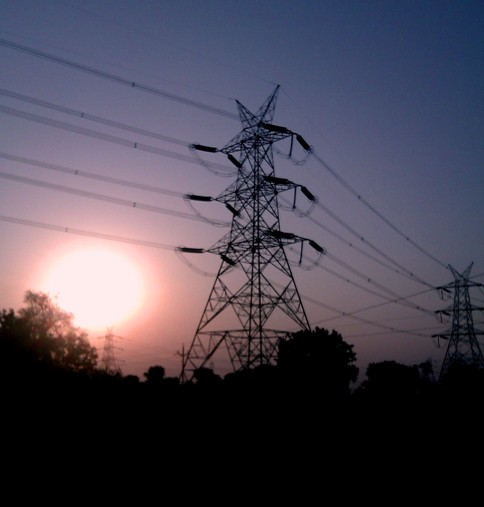Benefits of Distributed Solar Power Generation
Large, utility scale power plants have been the conventional mode of generating electricity for decades. Limitations on availability of land and infrastructure and rapidly urbanizing economies pose challenges to this model. Distributed generation, though not a new concept, is now gaining ground the world over. While it has its own challenges, it promises to complement utility scale power to address modern power needs successfully.
Distributed Generation gaining ground
In traditional grid architecture, large power plants are located at far off locations from where electricity is wheeled to load centres. Distributed generation is used to generate electricity on a small scale at a large number of locations located close to the load. With the growth of solar energy, distributed generation has been adopted on a large scale in various countries as an important source of power.
Benefits of distributed generation
- Saving in T&D losses
- No requirement of additional land
- Reduction in system congestion
- Flatten Peak load curve
Many examples of success
Some countries have successfully tapped solar energy by promoting large number of small installations on the vacant rooftops/ unutilized land. Italy and Germany have promoted solar power with attractive FiTs for Distributed Solar. Today, Italy has more than 5 Lakh installations and Germany has more than 14 Lakh installations. Distributed solar is an important source of power for these countries.

Australia and USA are also using solar power for distributed generation. Australia had more than 12 lakh solar systems while USA had more than 4.5 lakh systems by the end of last year. Besides programs for FiT and Net Metering, these systems are being promoted through various incentives – accelerated depreciation, Renewable Purchase Standards, tradable certificates, capital subsidy, property tax incentive etc.
States encouraging distributed generation
Karnataka:
Government of Karnataka has published Solar Power Policy for the period of 2014-2021. Policy targets capacity of 2,000 MW by 2021. Eligibility: All consumers are eligible to avail benefit under net metering. Energy injected will be offset with the consumption during the month. Surplus energy left after balancing out the consumption shall be paid by the Discoms at the rate determined by KERC from time to time. Approval from KERC is pending for implementation of net metering in Karnataka.
West Bengal:
WBERC has published WBERC (Cogeneration and Generation of Electricity from Renewable Sources of Energy) Regulations, 2010 on 10th August 2010.
Eligible Capacity: 2 kWp and above but below 100 kWp
Eligible consumers:
- Institutional consumers like Government hospitals and health centres,
- Hospitals and health centres owned and run by private charitable organizations,
- Government and Government aided schools and academic institutions,
- Government offices and organizations,
- Housing Complexes, local bodies like municipalities, panchayats and cooperative societies.
Injection up to 90% of the consumption from the licensee’s supply calculated annually can be offset.
Chhattisgarh:
CSERC has published CSERC (Determination of tariff for procurement of power from Rooftop PV Solar Power Projects by distribution licensees of State) Regulations, 2013 on 7th October 2013.
Eligible Capacity: 50 kWp to 1 MWp
At least 51% of the aggregate net electricity generated, determined on an annual basis, should be consumed for the captive use. Excess energy supplied to distribution licensee shall not qualify for export of energy and no payment will be made for such excess energy. 50% of the tariff determined for ground mounted plants by the CSERC as applicable from time to time will be applicable for the energy injected in to the system. For FY 2013-14, this tariff for rooftop PV systems was Rs. 4.35 per kWh.
Andhra Pradesh:
Government of Andhra Pradesh published a Policy on net metering for solar grid–interactive roof-top and small SPV power plants on 25th March 2013.
Eligible consumers: Only three phase service consumers are eligible for net metering. Units injected into the grid in excess of the consumption will be treated as lapsed and will not be eligible to get any payment from the Discom. Andhra Pradesh and Telangana ERCs need to approve this policy in order for implementation.
Tamil Nadu:
Government of Tamil Nadu introduced net metering in its Solar Energy Policy in 2012.
Eligible Consumers: Selected categories specified are eligible to avail benefit under net metering scheme. Electricity generated from a solar plant is capped at 90% of the electricity consumption by the eligible consumer at the end of the settlement period. Excess energy above 90% shall be treated as lapsed. At the local distribution level connectivity of solar systems shall be restricted to 30% of the distribution transformer capacity.
Other states such as Delhi, Punjab are in the process of formulating policies for promotion of solar energy. While Gujarat has already implemented rooftop solar on large scale through its rent-a-roof model, others such as Haryana, Maharashtra and Rajasthan are also following suit by setting up pilot projects.
Encouragement by Central Government and Local Bodies:
Ministry of New & Renewable Energy (MNRE)
MNRE provides subsidy to select large scale rooftop pilot projects setup as demonstration for faster adoption of solar through SECI. It is in the process of formulating a new rooftop policy based on net metering and is also considering FiT in place of reverse bidding for faster adoption of solar energy in the country.
Central Electricity Authority (CEA)
As a guideline for all generators, CEA has specified technical requirements for connecting the small scale solar power plant to the distribution network through CEA (Distributed Standards for Connectivity of the Distributed Generation Resources) Regulations, 2013.
Central Electricity Regulatory Commission (CERC)
CERC has specified Draft Terms and Conditions for determination of Tariff for Rooftop PV and other Small Solar Systems (< 1 MW). Final regulation is awaited.
Forum of Regulators (FoR)
The regulatory framework in India for the Feed-in-Tariff based renewable projects has been evolving over the years. However, framework for net metering of solar power projects is still under stages of development. FoR has published a model regulation on net metering for ERCs.
Role of Local Civic Bodies
Some local government bodies provide rebate on the installation of solar power plant in the consumer’s premises. For example, Nashik Municipal Corporation offers 5% rebate on property tax on installation of on-site solar power plants.
Reference: This article is based on monthly newsletter of Agneya Carbon Ventures Private Limited. You can access it from here.




